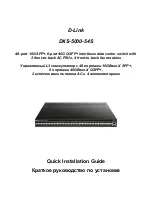
interface GigabitEthernet0/0/3
port link-type trunk
port trunk allow-pass vlan 300
#
return
1.7.3 Example for Configuring Policy-based Routing
After packet redirection based on complex traffic classification is configured, the S3700 redirects
packets with different IP priorities to different interfaces so that the S3700 provides different
bandwidth services.
Networking Requirements
The Layer 2 switch of a company is connected to the ISP device through the Switch; one is a 1-
Gbit/s link with the gateway as 20.20.20.1/24 and the other is a 10-Gbit/s link with the gateway
as 20.20.30.1/24. The company requires that the 10 Gbit/s links send only the packets with
priorities as 4, 5, 6, and 7 and 1 Gbit/s links send packets of lower priorities to the ISP. See
.
Figure 1-3
Policy-based routing networking
GE0/0/1
GE0/0/2
GE0/0/3
20.20.20.2/24
20.20.20.1/24
20.20.30.2/24
20.20.30.1/24
L2 Switch
Switch
Router
Core
network
Configuration Roadmap
The configuration roadmap is as follows:
1.
Create VLANs and configure interfaces so that the Switch can ping the ISP device.
2.
Create ACL rules to match the packets with priorities as 4, 5, 6, and 7 and priorities as 0,
1, 2, and 3.
3.
Create traffic classifiers to match the preceding ACL rules.
4.
Create traffic behaviors to redirect matching packets to 20.20.20.1/24 and 20.20.30.1/24.
5.
Create a traffic policy, bind traffic classifiers to traffic behaviors in the traffic policy, and
apply the traffic policy to an interface.
Data Preparation
To complete the configuration, you need the following data:
l
VLAN 20 and VLAN 30 that all of GE0/0/1, GE0/0/2 and GE0/0/3 are added to
l
ACL rules 3001 and 3002
l
Traffic classifiers
c1
and
c2
l
Traffic behaviors
b1
and
b2
l
Traffic policy
p1
S3700HI Ethernet Switches
Configuration Guide - QoS
1 Class-based QoS Configuration
Issue 01 (2012-03-15)
Huawei Proprietary and Confidential
Copyright © Huawei Technologies Co., Ltd.
45
















































